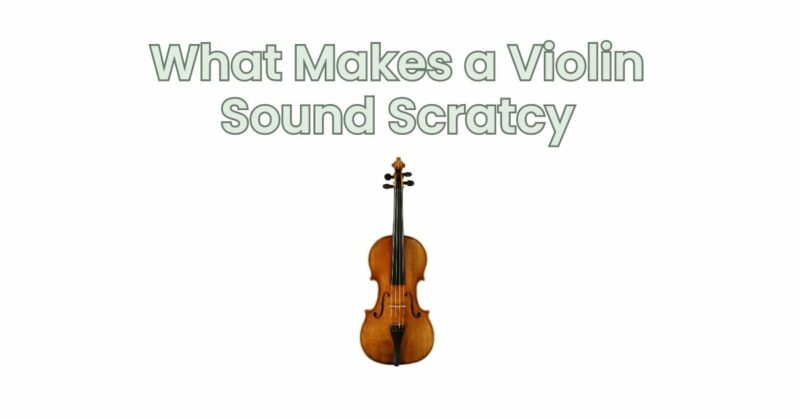A scratchy sound produced by a violin can be frustrating for any player, detracting from the instrument’s beauty and expressiveness. Understanding the causes of a scratchy sound is essential for troubleshooting and finding appropriate solutions. In this article, we will explore common factors that contribute to a scratchy violin sound and provide insights into how to address them effectively.
- Bow Technique and Pressure:
- Bowing technique plays a significant role in the quality of sound produced. Applying excessive pressure or using an incorrect angle can result in a scratchy sound.
- Solution: Practice proper bowing technique, maintaining a relaxed grip and consistent pressure. Experiment with adjusting the bow angle and finding the sweet spot that produces a smoother tone.
- Bow Speed and Control:
- Inconsistent bow speed or lack of control can cause a scratchy sound. Uneven bowing can create variations in pressure, resulting in an inconsistent tone.
- Solution: Practice bow control and focus on maintaining consistent bow speed and pressure across the strings. Gradually increase your control and refine your technique through regular practice and guidance from a qualified teacher.
- Rosin Buildup:
- Excessive rosin buildup on the bow hair can contribute to a scratchy sound. Over time, rosin residue can accumulate and affect the bow’s ability to produce a clear and resonant tone.
- Solution: Regularly clean the bow hair to remove excess rosin buildup. Use a soft cloth or specialized bow hair cleaning papers to gently wipe the hair, removing any residue. Be cautious not to overapply rosin, as this can also contribute to scratchiness.
- Worn Bow Hair:
- Bow hair that is old, worn, or damaged can produce a scratchy sound. As the hair ages, it loses its grip on the strings, resulting in reduced sound quality.
- Solution: Consider rehairing the bow with fresh strands of horsehair. Professional rehairing by a luthier or bow maker ensures that the hair is properly aligned and fitted to the bow, restoring its optimal performance.
- String Condition:
- Worn or aged strings can contribute to a scratchy sound. Over time, strings lose their elasticity and resonance, affecting the overall tone produced.
- Solution: Regularly change your violin strings, following the manufacturer’s recommendations or seeking guidance from a professional. Fresh strings can significantly improve the sound quality and reduce scratchiness.
- Instrument Setup and Maintenance:
- Poor instrument setup or maintenance issues, such as an improperly fitted bridge or worn-out fingerboard, can impact the violin’s sound quality and contribute to scratchiness.
- Solution: Consult a luthier or violin technician to evaluate your instrument’s setup and address any necessary adjustments or repairs. A well-maintained instrument ensures optimal playability and sound production.
Conclusion:
Identifying the causes of a scratchy violin sound is the first step toward finding appropriate solutions. By addressing factors such as bow technique, rosin buildup, worn bow hair, string condition, and instrument setup, you can significantly improve the sound quality and reduce scratchiness. Remember to focus on proper bowing technique, regularly clean the bow hair, change strings as needed, and maintain your instrument’s setup. If you are uncertain or encounter persistent issues, seek guidance from a qualified teacher or professional luthier. With patience, practice, and attention to detail, you can enhance the sound of your violin and enjoy a more beautiful and resonant tone.


